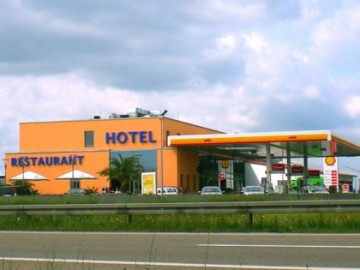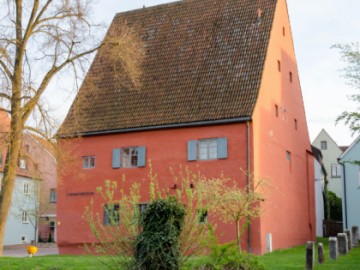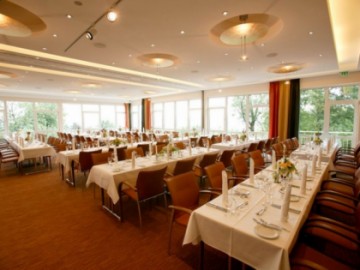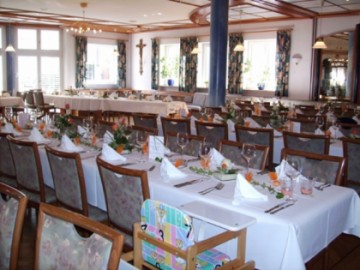Dance House and Museum of Archaeology: Entertainment and Education
The Dance House appeared on the main street of Donauwörth, Reichsstrasse, in 1400. Specially hired musicians performed in the hall on the first floor every Sunday. The townspeople come to relax, socialize and dance. It is surprising that the ground floor of the house was at the same time used as a market. The finest hour of the Dance House came in 1500, when the Holy Roman Emperor Maximilian I celebrated the birth of his grandson and future heir, Charles V, in it.
In 1570, the Dance House stopped to be used for its intended purpose, and the elegant building housed a granary. At the beginning of the XVIII century, the mansion burnt down, but was rebuilt in 1872. A hundred years later it was restored and the townspeople began gathering in it again for socializing and entertainment, as in the XV century. Today, the building houses a hall for lectures and conferences, a theater with 600 seats and a cafe. The Museum of Archaeology is on the third floor. It includes finds that are unexpectedly important for the provincial collection-from bronze swords with ornaments of the Hallstatt period (900-400 BC) to things of the time of the Romans, who built a fortified camp and many villas here. What is left from the Romans also include the road, which ended just in Donauwörth (Via Claudia Augusta with the bridge over the Danube), terracotta figurines, fragments of carts, and examples of weapons and ammunition, with which meticulous Germans were able to recover the armament of the Roman Legionnaire and even test them in the field!





































